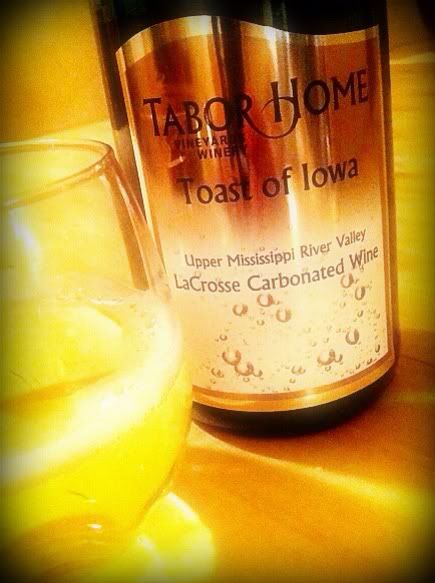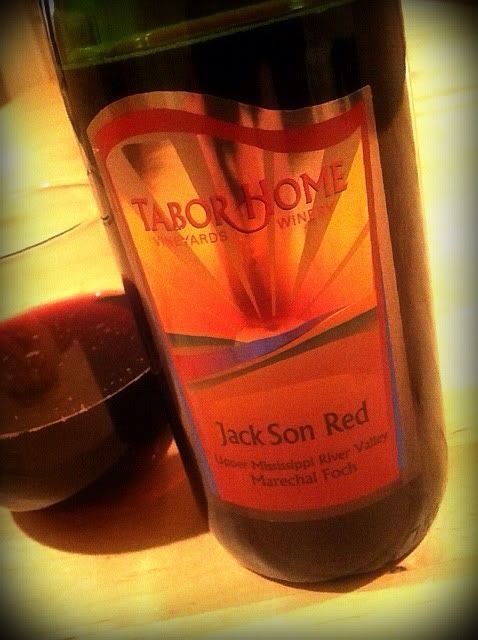When Wollersheim Winery's winemaker, Philippe Coquard, came to the United States as an exchange student he chose Wisconsin. Over thirty years later he still considers it the best move of his life, and not just because he loves the Marechal Foch grape.
Coquard grew up in Beaujolais with twelve generations of winemakers preceding him in the family tree. Immediately after graduating from wine school, he traveled to Wisconsin as an exchange student. There, he hired on with Wollersheim, fell in love with the vintner’s daughter and got married. The rest, he says - without a hint of irony - is history.
The Wisconsin winemaker tells me, "Wisconsin is a bit colder than Beaujolais {!} but I use the same grape growing and cellar methods that I learned in France. It's the same approach I would use in Beaujolais with Gamay or Chardonnay grapes. Looking at wine globally, rather than regionally, he says "I could make wine anywhere using these techniques."
Marechal Foch - Coquard calls the grape “one of the most noble hybrids of all” - is “closer to a Côtes du Rhone than a Pinot Noir,” he says. In fact, it has been around Europe a few times and thrives now in America’s cold Midwest.
In addition to Coquard's pet grape, the Wollersheim vineyards are full of French-American hybrids like Marquette, La Crosse, La Crescent and Frontenac. The winery was founded in 1847 by Agoston Haraszthy, a Hungarian who later founded one of California's first commercial wineries. Wollersheim closed its doors for Prohibition and did not reopen until 1972.
Wollersheim does source some grapes from gentler climates - their Carignane comes from Lodi and they also buy grapes buy from Washington and New York. Aside from these outside grapes, everything they use comes from within a mile of the winery in Prairie du Sac, Wisconsin. The lion's share of the winery's production is distributed in-state, with about five percent ending up in the Chicago area. Very little goes to the twelve states to which they ship.
The fine folks at Wollersheim kindly provided a sample of two of their home-grown wines for the Now And Zin Wine Country series.
Wollersheim Domaine Reserve 2013
This wine is a perfect example of why the winemaker has a favorite grape. Estate-grown - 95% Marechal Foch and 5% Millot - the Domaine Reserve shows the terroir of the Lake Wisconsin American Viticultural Area. The grapes are destemmed before crushing and the juice undergoes a long, warm fermentation. After twelve months of barrel aging in half American and half French oak, the wine has aging potential of five to ten years, according to the winery. Alcohol stands at 13.5% and it retails for $25. They have made this wine since 1976.
The winery says Domaine Reserve is "among the rare single-field wines, using only grapes from our oldest vines located on our steepest slopes."
Dark garnet color, the nose displays blackberry, plum, spices and herbs with an amazing, mouthwatering mocha angle. On the palate, there is dark berry, herbs, coffee, and a tart acidity to make this a great wine to have with dinner. The tannic structure gives the green light to beef, but its spicy side says pork.
Wollersheim Prairie Blush 2014
This deep pink semi-dry, dubbed "white Marechal Foch," is made completely of Wisconsin-grown Marechal Foch grapes. It gets a cold fermentation, with a natural residual sweetness achieved by stopping the fermentation. The winery advises we enjoy it young, within two years of bottling. It sells for $10 and carries an 11% alcohol content..
This blush - the Midwestern word for "rosé" - has a beautiful, ruby-red glow and a fresh-as-spring nose full of strawberry, raspberry and cherry aromas. The Wisconsin earth comes through as well, but does not overwhelm the fruit. The flavor is rather like a fruit salad, too, with good acidity on a palate that hits a step drier than the "off-dry" meter reading suggests. It goes great with cheese - in Wisconsin, it had better go great with cheese - and it is perfect for picnics.
You can hear my three-part interview with Coquard on the Now And Zin Wine Report: Part 1, Part 2, Part 3.


 JackSon Red 2010
JackSon Red 2010